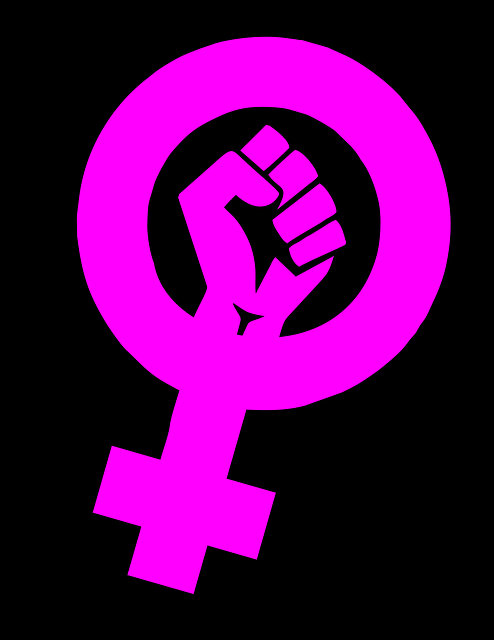
Both men and women are still imprisoned by patriarchy in the vast majority of our globe. Together, we inhabit a world of social logic where prejudice, injustice, and exploitation taint the relationships of concern, love, and respect between people, groups, and communities. From the streets to the workplace, patriarchy permeates even the most private areas of the house. All around the nation and the world, we witness this. We continue to be divided and conditioned, and these pernicious prejudices sully our ability to be creative, both consciously and unconsciously. In order to realize a new humanity, it is imperative and essential to constantly challenge these exclusive beliefs and histories. Hence, patriarchy has an effect on both genders.
No one culture, region, or era is exempt from patriarchal opposition. Contrary claims are supported by a lot of evidence. In India, historians are uncovering the untold tales of female warriors, rulers, saints, and thinkers as well as shedding greater insight into the interaction between the public and private spheres and the class, caste, gender, and political power structures. Pessimism and hopelessness are not warranted by incomplete and perverted social revolutions that betrayed the dreams of freedom and equality for both men and women. On the contrary, they provide the human race with a wealth of learning. We must acknowledge the successes they brought about, the work needing to be done, and the risks of subversions that have already occurred. Building feminist futures requires an exploration of feminist pasts. Men have fought for justice together with other groups of people throughout history.
Women now have the right to vote and have a marginally better position in the workplace, and a liberation ideology has been developed as a result of the feminist movement and reaction in the 20th century. On the road to gender justice and equality, collective action, movements, laws, and policies have helped to pave a substantial way. Several tasks are still undone, and there have also been recent regressions. The commodification of women has increased, political religion is still only a small part of politics, and there are still few women in positions of political power. In addition to leaving lasting scars, broken promises shattered hopes, and dispersed sufferings also add to the general humiliation of humanity.
The case for addressing gender equality has been a long-standing goal to advance the SDG targets and achieve the 2030 Agenda, Gender inequality must be brought to the forefront of programs and analysis. Faster progress across all the SDGs will largely depend on the thorough integration of gender dimensions in public policies.
The systematic review indicates that while harmful masculinities are an issue of global concern, only 8% of interventions that involve men and boys actually challenge male norms or unequal power privileging men over women (WHO report)
In order to fulfill human rights and advance social and economic development, eliminating gender inequality and violence is crucial. Gender inequality is one of the most significant global obstacles to these goals.
Women continue to face high rates of violence and discrimination worldwide, there are still significant gender differences in many spheres of life, including the workplace, the home, and public life:
- The gender gap in caregiving: Internationally, women devote between 2 and 6.5 times more time per day to caregiving than men do; there is no country in which men contribute equally to unpaid care work.
- The employment gap: Women worldwide earn 24% less than men, and this is even worse when examining intersections of identity; internationally, 3/4 of working-age men are in the labor force compared to 1/2 of working-age women; (UN women report)
- The political divide: Despite significant advancement, there is still a huge gender difference in women’s political engagement, one that will take 99 years to close and is greater than those in health, education, and economics. (Global gender gap report)
What is a gender-transformative approach?
WHO defines a gender-transformative approach as one ‘that address the root causes of gender-based health inequities through interventions that challenge and redress harmful and unequal gender norms, roles, and unequal power relations that privilege men over women’.
Harmful masculinities and their consequences
- Gender norms that uphold men’s privilege over women harm women’s and children’s health and are harmful masculinities. Examples include behaviours that increase the likelihood of men’s perpetration of violence against women and against children.
- Men’s control over a woman’s sexual and reproductive decision-making limits her access to life-saving health services including for sexual and reproductive health.
- Men’s lack of, or limited, involvement in child care, unpaid domestic work, and care giving has wider implications for the well-being of the family, placing a disproportionate burden of care work on women and depriving them of opportunities to earn an income and contribute economically to the household.
Way forward
- Programmes and interventions engaging men and boys need to be intentional in promoting gender equality by explicitly focusing on harmful gender norms including masculinities and challenging unequal gender power relations that privilege men or subordinate women.
- Evaluations of interventions with men and boys need more robust experimental designs and outcome measures to generate a stronger evidence base.
- Promoting gender equality by engaging men and boys in order to realize sexual and reproductive health and rights requires diverse partnerships – not only between program implementers and researchers but also between those working on men and boys and feminist organizations.
It’s important to emphasize that patriarchy dehumanizes all men while promoting the authority of some men. We must also dispel the false idea that feminism is hostile to men. For justice and equality for everyone, feminism stands. Let’s all work together, regardless of gender, to promote women’s equality in the workplace, the right to own property, and the sharing of household duties. Work to engage men in gender equality should be human-rights based, feminist-informed, and should work to actively challenge and change harmful gender stereotypes.
Sada is a Ph.D. Scholar majoring in Sociology. She is a gold medallist from Aligarh Muslim University. She works and writes on gender-related issues and the Sociology of health in India.















































